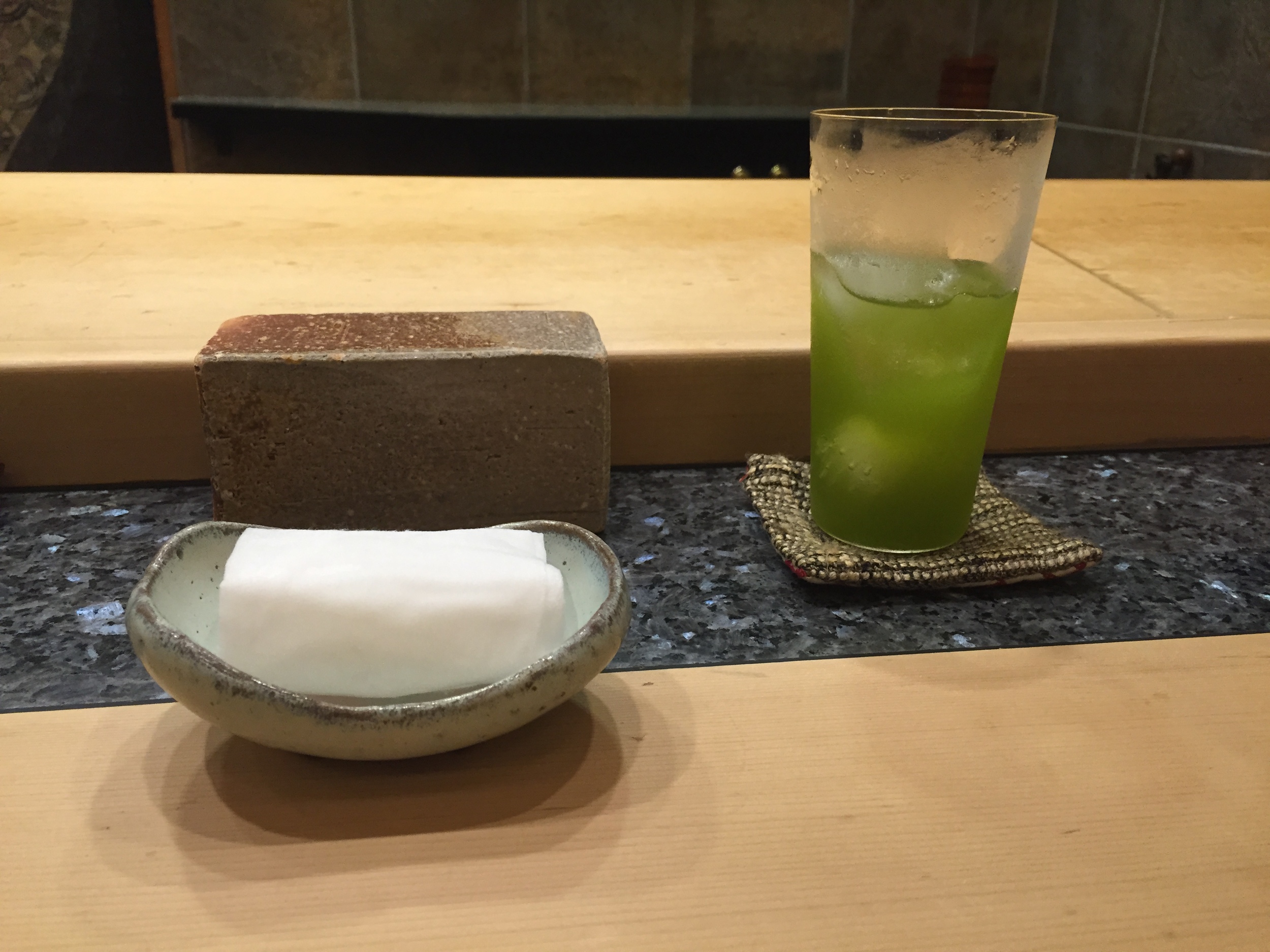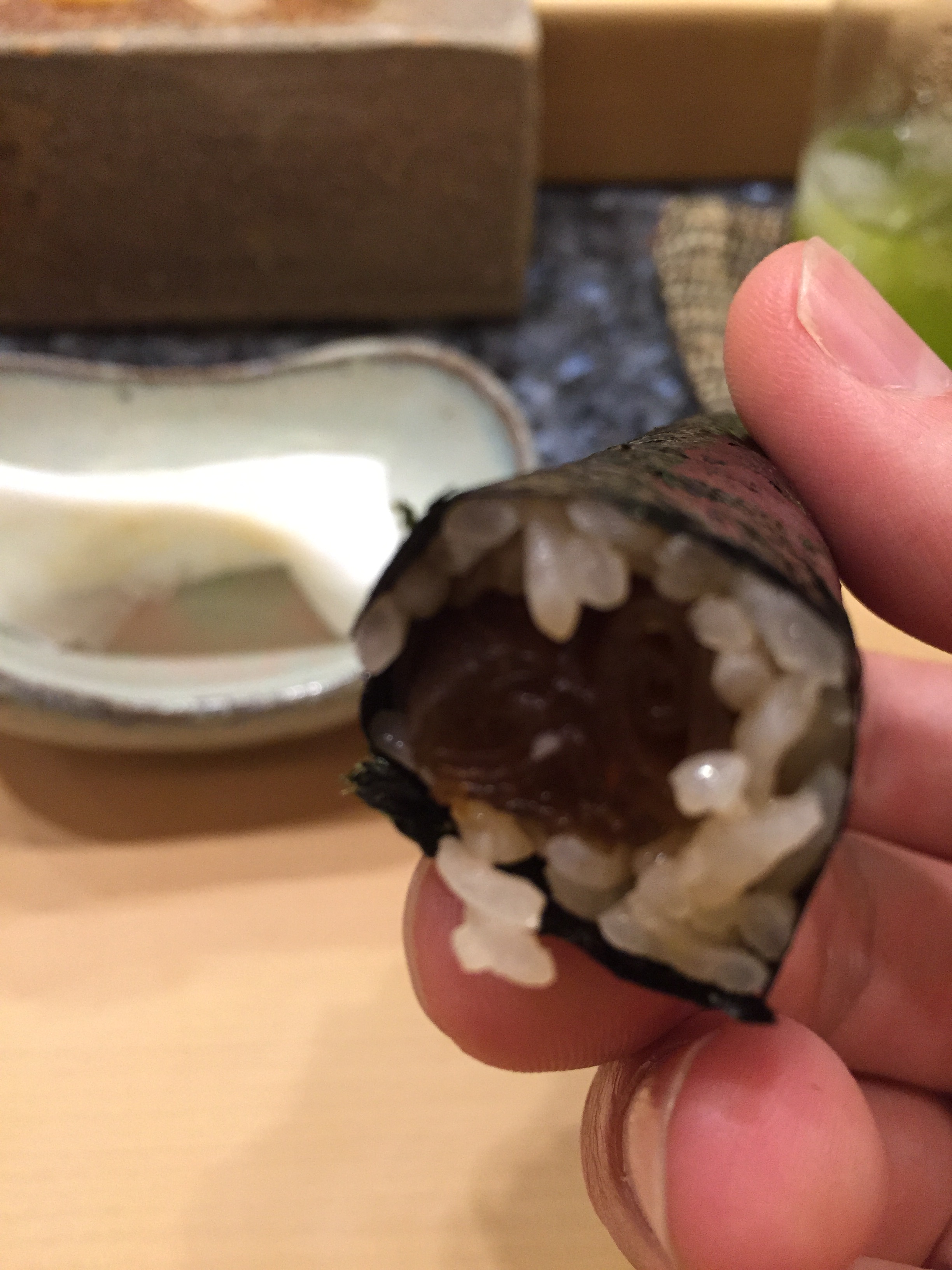Note: Since my visit to Hatsunezushi in mid-2015, the shop has exploded in popularity (you can blame some hyperbolic instagrammers for that) and is now quite difficult to book - supposedly, as of end-2016, all of 2017 is already booked for non-regulars!
- Cost: JPY 21,500 before drinks
- Size: 7 seats at counter
- Style: sushi omakase
- Reserved: 6 weeks in advance
One of the aspects of eating sushi in Japan that I enjoy so much is the fact that sushi there is such a highly-developed art that many chefs have developed unique styles and techniques. These distinctive styles seek to enhance certain Japanese ideals of cuisine - items like the authenticity of flavors, balance and harmony, and proper representation of tradition. This type of uniqueness is difficult to come by at high-end sushiya outside of Japan, where chefs are focused on just putting out a good product for customers whose knowledge of sushi may be more casual.
Hatsunezushi is definitely a sushiya that falls into this category. Much of the meal there is spent explaining the thinking behind the preparations of the neta and shari, with instruction on how the nigiri should be eaten and how long certain neta should rest on the tongue. It might be for these quirks that the shop's rating is somewhat middling on tabelog, despite having two Michelin stars and a product that is of very high quality. As a result, it is not difficult to reserve, even for non-Japanese speakers.
Nakaji-san and his wife are the only employees. At the start of my meal there, I could smell the akazu being mixed with the just-cooked rice. A sample of the shari was the only tsumami for the meal.
The unique aspects of Nakaji-san's style are numerous, so I will try and hit on some of these in succession:
- There is a laser-focus on temperature of the shari and neta. Only one batch of rice is made for each seating, and earlier neta are chosen to pair with the shari while it is more moist and warm. Richer neta come later, to pair with the shari when it has dried a bit and cooled off. Beyond that, Nakaji-san ran through specific temperatures for storing and resting each of the neta - I didn't remember most of these (aside from the fact that the resting plates are held at 55C), but the point was to create a "harmonious" temperature of the food that was just above body heat. Nakaji-san called this "mother's milk" temperature.
- Diners are instructed to eat the nigiri by flipping them upside down from the hand. In some instances, Nakaji-san instructs waiting a few seconds before chewing, as the flavor profile of the sushi changes from the initial interaction with enzymes in the mouth.
- Several nigiri are composites of several cuts of neta. One example was mako-garei that included slices from the back, belly, and fin (engawa), topped with a slice of kimo. Another was murasaki and bafun uni served together. Typically, I prefer to taste the flavors of distinct cuts and neta separately, but I realized that Nakaji-san's intent with this technique was to create a composite of flavors and textures. The results were excellent.
- Nakaji-san is very proud of his maguro, and what he serves is on par and in some respects above what can be found at the other top sushiyas in Tokyo. Three cuts of tuna are first served plain, and then served marinated (zuke). For the richest pieces, the maguro cuts were marinated in a shoyu that Nakaji-san had made with a maguro-dashi and then aged for 10-years. The flavors of these pieces had extremely rich tuna umami, and were reminiscent almost of aged red wine. A variety of cuts went into a final temaki that was an amalgam of textures and flavors without being muddy or overdone.
The neta is indeed very high quality. Uni in particular was the best I have tasted in Japan, and hamo from Awaji was top-notch. But not everything is perfect - anago was a bit dry, and a nigiri of shio-grilled ayu was better in concept than taste. Some items - such as the maguro zuke and cured aji "prosciutto" were truly excellent and innovative.
One aspect of the meal that I found a bit strange was that the sushi is rather large and sometimes, out of balance. This is a bit surprising given how much attention is paid to other minute details. The shari itself is good, but a bit less firm than my ideal.
I enjoyed my meal at Hatsunezushi immensely, but the style is so unique that I am not sure it is a place I would visit frequently if given the opportunity (in some respects, it is the opposite end of the spectrum to a place like Saito).
Nakaji-san is a prime example of the chef-shokunin. He is a fourth generation sushi chef (second-generation in the same shop) who lives in the same building as his sushiya. He rarely leaves Japan. It is clear that sushi is his life. He is also a super-nice guy and speaks decent English. The quality, technique, and level of care are certainly deserving of the shop's Michelin-rating, and probably underrated by tabelog.

































